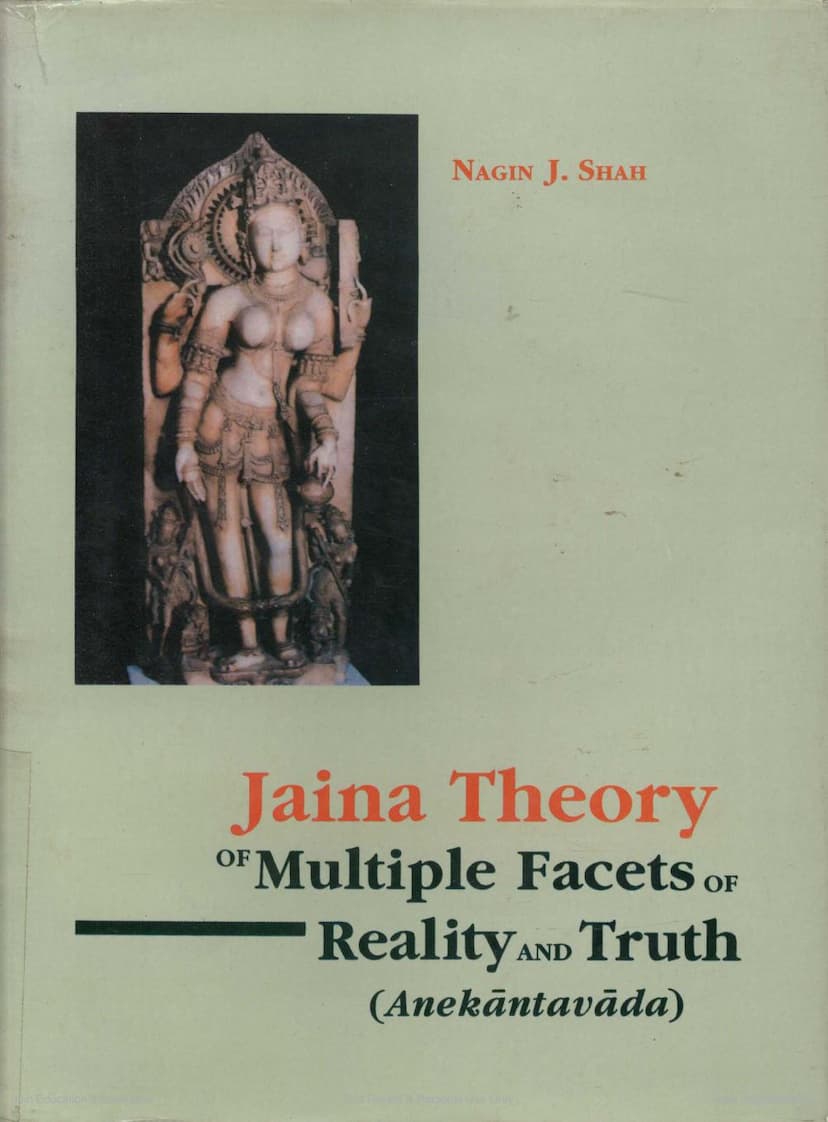Jaina Theory Of Multiple Facets Of Reality And Truth
Added to library: September 2, 2025

Summary
This comprehensive summary of "Jaina Theory of Multiple Facets of Reality and Truth (Anekāntavāda)" edited by Nagin J. Shah draws from the provided text, focusing on the core concepts and the contributions of the various essays.
Core Concept: Anekāntavāda (The Theory of Multiple Facets of Reality and Truth)
Anekāntavāda is presented as the fundamental and central philosophy of Jainism, so much so that the entire Jaina system is also known as Anekānta Darśana. It is considered Jainism's most original and brilliant contribution to philosophical thought. The theory offers a "master key" to understanding complex philosophical problems that have engaged thinkers throughout history.
Key Principles and Meanings:
- Ontological Aspect: Reality is inherently multifaceted, possessing infinite aspects and characters (anantadharmātmaka). It can even possess seemingly opposite characters simultaneously, such as being and non-being, permanent and transient, one and many, describable and indescribable.
- Epistemological Aspect: Perfect knowledge (embodied by an omniscient being) comprehends reality in its entirety with all its infinite aspects simultaneously. Ordinary human knowledge, however, is always partial and relative to the specific aspect being apprehended at a given time. This leads to partial truths, which, when mistaken for the whole truth, cause conflict and intolerance. Different philosophical systems offer partial truths by concentrating on different facets of reality.
- Logical Aspect (Syādvāda): Anekāntavāda leads to the theory of relative judgment, known as Syādvāda. This theory emphasizes the importance of qualifying statements to reflect their relativity and conditionality. The term 'syāt' (meaning "somehow," "from a certain standpoint," "in a certain sense," or "relatively") is used to qualify judgments, acknowledging that every assertion is true only in relation to a specific aspect or point of view. Syādvāda is not skepticism; it asserts the conditional character of judgments, not their uncertainty.
Key Themes Explored in the Essays:
The book is a collection of articles by eminent scholars that elucidate, examine, and evaluate Anekāntavāda. Several key themes and arguments are highlighted:
- Reconciliation of Opposites: Anekāntavāda demonstrates that what appears contradictory to a simple mind is, in fact, complementary. It aims to reconcile conflicting views and show that truth lies in the richness of its infinite aspects.
- Intellectual Toleration and Openness: The theory fosters intellectual toleration, liberates individuals from dogmatic adherence to inherited views, broadens outlooks, and encourages openness to diverse philosophical perspectives.
- Non-Absolutism vs. Absolutism (Ekāntavāda): The essays explore the contrast between Anekāntavāda and Ekāntavāda, with the latter being criticized for leading to dogmatism and intolerance. The Jaina approach is seen as an "inclusive middle" that accepts multiple viewpoints, unlike the Buddhist "exclusive middle" which rejects extremes.
- Syādvāda and Saptabhangi: The logical structure of Syādvāda, particularly as articulated in the sevenfold predication (Saptabhangi), is a significant focus. The essays analyze its grammatical aspects, its relationship with Naya-vāda (theory of standpoints), and attempts to formalize it using modern logical frameworks (many-valued logic, modal logic, conditionality, and existential quantifiers).
- The Role of 'Syāt' and 'Eva': The precise meaning and function of the particle 'syāt' are examined, differentiating it from mere modal expressions like 'may be' or 'possibly.' The interpretation of 'eva' in specific Jaina logical formulations is also discussed.
- Critique and Defense: The book includes discussions of criticisms leveled against Anekāntavāda by rival Indian philosophical schools, particularly the Nyāya school (as presented by Bhāsarvajña). These critiques often focus on the perceived violation of the law of contradiction and the potential for practical paralysis. The Jaina responses to these criticisms, emphasizing the contextual and relative nature of judgments, are also explored.
- Connection to Modern Science: The essays draw parallels between Anekāntavāda and concepts in modern physics, such as the principle of complementarity (as articulated by Niels Bohr) and the wave-particle duality. This connection is seen as enriching the understanding of both fields and highlighting the universality of the principle of looking at reality from multiple perspectives.
- Roots and Development: The historical development of Anekāntavāda is traced, with discussions on its potential origins in early Pali literature (vibhajyavāda, anekamsa) and the evolution from simpler to more complex logical frameworks.
- Relevance in Modern Times: The essays conclude by emphasizing the profound relevance of Anekāntavāda in addressing the complex challenges of the modern world, advocating for its role in fostering peace, cooperation, understanding, and a non-dogmatic, tolerant worldview. It is presented as a philosophy that can help navigate ideological conflicts and promote human coexistence.
In essence, the book offers a multi-faceted exploration of Anekāntavāda, presenting it not just as a sophisticated logical and epistemological framework but also as a path towards intellectual harmony, ethical conduct, and a more comprehensive understanding of reality and human interaction.